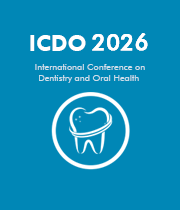Title: Challenge in the management of severe mandibular deficiency
Abstract:
Introduction: Significant mandibular deficiency presents functional impairments such as malocclusion, airway obstruction, compromised mastication and aesthetic concerns. While mandibular distraction osteogenesis (MDO) is often considered in extreme cases requiring large advancements, classic orthognathic surgery remains a well-established approach with predictable outcomes.
Objective: To assess the aesthetic and functional results of classic bimaxillary orthognathic surgery, without mandibular distraction, in the treatment of severe mandibular deficiency.
Methods: Five young patients (ages between 19 and 26 years) with pronounced skeletal Class II malocclusion and severe mandibular retrusion were managed surgically. Although MDO was initially proposed due to the extent of mandibular deficiency (advancements of 12 to 15 mm), it was not performed due to financial limitations.
Instead, all patients underwent orthognathic surgery, combining maxillary impaction with bilateral sagittal split osteotomy (BSSO) for mandibular advancement (>1cm), supplemented by genioplasty to enhance chin projection.
Results: Major improvements were seen in occlusion, chewing function, and airway comfort. Aesthetically, there was a marked enhancement in lower facial balance and profile projection. No significant complications occurred, and all five patients reported high satisfaction levels.
Discussion:These results underline the effectiveness and reliability of conventional surgical techniques even in cases where large mandibular advancements are needed. In selected patients, especially where MDO is not feasible, classic orthognathic procedures remain a valuable alternative.
Conclusion:Bimaxillary osteotomy, associated with genioplasty, can provide excellent correction of severe mandibular retrognathia. Even in the absence of distraction techniques.




